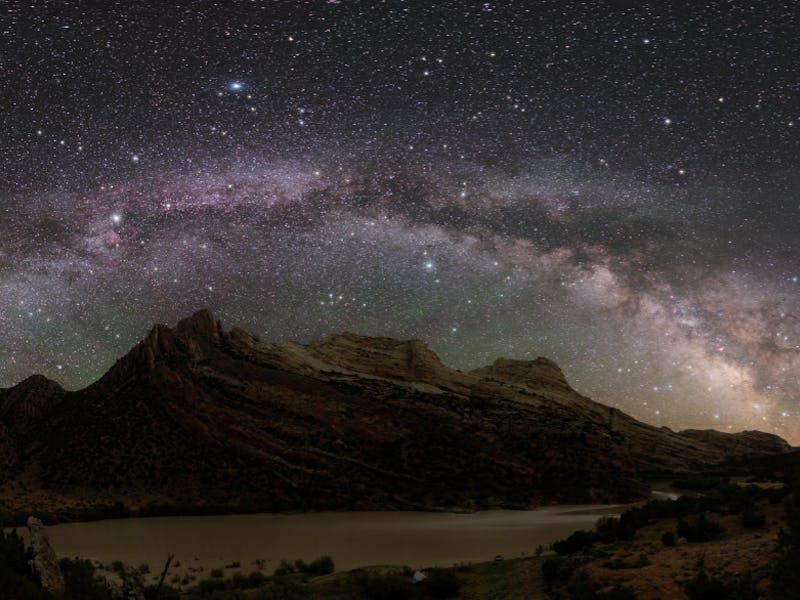A Third of Humans Can't See the Milky Way Because of Light Pollution
That means you, probably.

A team of scientists just completed a years-long project of mapping artificial light pollution across the world and the resulting atlas reveals that a staggering number — a third of humans worldwide — can’t see the Milky Way, and 80 percent are affected by light pollution in some way.
Fabio Falchi, the lead researcher, created an original atlas of artificial light pollution a decade ago with colleagues, some of whom also comprise the team responsible for the most recent one. New technology allowed the scientists to expand and improve considerably on the original data.
Inverse spoke to Christopher Kyba of the GFZ German Research Center for Geosciences, a coauthor of the atlas responsible for calibrating the map, to learn more. Kyba joined the project in 2012 and helped determine the precise angle from which to measure the light, as well as making sure the map’s physical units corresponded to how we measure our surroundings in real life.
This has basically been a decade in the making — what’s changed since the original atlas was created?
There’s a new satellite now, with better data, than the one they used with the original. They also improved the program they use to simulate light in the atmosphere. And in the meantime these things called Sky Quality Meters, hand-held light meters, came out and became broadly distributed. What I want to do next is understand how the sky is changing worldwide. One year, a whole city might be measured in lots of places and in other years not at all, so this atlas will help us with that.
Any surprises as to where the most- and least-polluted areas ended up being?
I was interested in the outcome for Germany, because I knew already that Germany is much more conservatively lit than other countries — per capita, German cities emit one quarter the light of other major cities. Germany has the second-largest population [among G20 countries] that can see the Milky Way from their house. So I was expecting that to be good.
In Canada, about half the population lives in a place where they look at the nighttime sky and their eyes still use daytime color vision — their eyes don’t even adapt because it’s so bright. But Canada as a whole, of course, is not very polluted; there are huge land areas where nobody lives, people are concentrated in big cities where they’re not able to see the stars. But in Germany, we don’t have land areas that fit into that totally natural category. We have small areas that are brightly lit, but there are no remote regions really — there’s just kind of a glow everywhere. Lots of people live where the light is moderate. We don’t have the spectacular skies you get in deserts, in places like Canada or the western United States. But we do get a good view of the stars here.
Light pollution in North America.
Will astronomers be able to make any practical use of this atlas?
If you’re talking about someone who works on a gigantic telescope, or wants to build one, this is useful for them to look at and get ideas for where to build, but in the end they’re going to look at that site and take careful measurements anyway. But for amateur astronomers, it could be really useful for them to look and say, ‘hey, if I went three kilometers this way I could find this really great spot.’
Does this have implications for research in how light pollution affects mental health? For sleep schedules?
Personally, I’m very skeptical about whether sky glow influences human physiology, because the lights we have in our houses are simply much brighter and we’re exposed to them for a lot longer. I have a streetlight that shines into my room — that’s a lot brighter than what’s coming from the sky. So I think it’s probably premature to look into that connection. That connection is real and definitely there, but in my opinion more likely connected to indoor lights and streetlights.
Light pollution in Europe, Africa, the Middle East and India.
What else could scientists use this atlas for?
The animals that live outside might be in a forested region with no streetlights, even an urban park with no direct light, but there’s still this tremendous amount of light from the sky shining on them. I’m really looking forward to what biologists and ecologists can do with this atlas, studying migration patterns, understanding whether animals with a wide territorial range are changing their behavior because of sky glow, because I think they must be. So this is going to help with that.
*This interview has been edited for brevity and clarity.